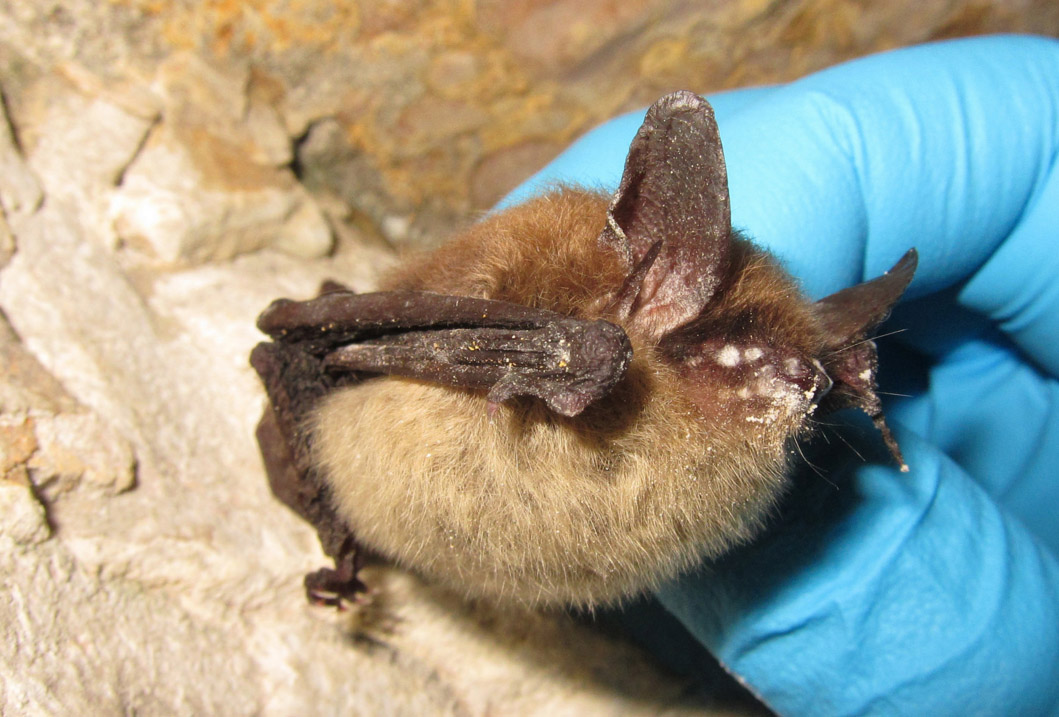Bats Get Federal Protection in Fight Against Deadly Disease
The deadly fungal disease that is killing bats in 27 states—including Pennsylvania— still appears to be spreading across the United States.
White-nose syndrome, which first emerged in the U.S. a decade ago, was just discovered in the Pacific Northwest for the first time in March. And now, the U.S Fish and Wildlife Service (USFWS) has created a rule aimed at protecting the northern long-eared bat—a species hit particularly hard by the disease.
“It protects that bat during its most sensitive life stages, while limiting the regulatory burden on the public and several different government agencies,” says Dan Kennedy of the Michigan Department of Natural Resources (DNR).
LISTEN: “Your Environment Update for April 20, 2016”
The new rule bans what is known as “purposeful take.” That basically means you can’t intentionally harm or kill these bats anywhere. The rule also bans “incidental take”—which means you can’t accidentally harm or kill the bats—anywhere they’re hibernating in winter or raising young in June and July.
It also prohibits harming or killing bats anywhere the government knows bats are hibernating or raising young. The federal government keeps a list of trees where bats raise young each year, and those spots are protected. But if a tree is not on this list, someone could cut it down.
Bat expert Allen Kurta says that amounts to a big loophole in the rule.
“Virtually every tree out there that these bats use could be removed,” Kurta says. “And many of them are going to be removed in the summertime when there are maternity colonies inside, because no one has to look.”
That means many bats raising their young this summer could still be unprotected. The Michigan DNR says part of the problem is that it has a good grasp on where northern long-eared bats hibernate, but they know less about where the bats spend the summer.
Reporting by Lindsey Scullen / Michigan Radio
Pennsylvania Bats Are Learning to Cope With White-Nose Syndrome
So just how devastating has white-nose syndrome been for Pennsylvania bats? The short answer: It’s hard to see it getting much worse. In fact, it’s estimated that more than 99 percent of all the state’s hibernating bat populations have succumbed to the disease.
White-nose syndrome causes bats to wake early in winter, and as a result, they burn their stored energy staying warm, which ultimately kills them. But Greg Turner, a biologist with the Pennsylvania Game Commission, says at a handful of caves and mines where bats congregate, he’s seen a small uptick in population from previous years.
The key: Bats are choosing new, colder sites to hibernate, which might help them survive the disease. Turner says sites with colder temperatures—just a couple degrees above freezing—might be helping bats to resist coming out of hibernation too early.
Interventions to treat already-diseased bats also look promising. To slow or stop the spread of the disease, Turner and his team are now experimenting with coating the surface of tunnels and caves where bats hibernate with a substance designed to prevent transmission of the fungus. But he doesn’t anticipate it’s going to be an instant solution.
“I don’t think there’s going to be a silver bullet that’s going to be applied to any given site or to bats directly and take care of the problem,” he says.
Despite the heavy toll white-nose syndrome has taken on Pennsylvania’s bats, Turner says he still believes in their resilience. And recent findings give him some hope for the future.
Reporting by Kara Holsopple

